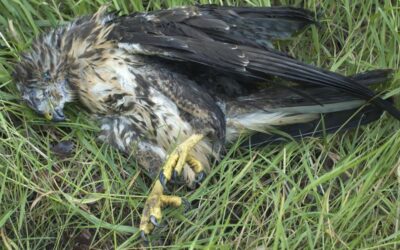Considerable progress was made to help bees, butterflies and other pollinators thrive across Scotland in 2019, a new report shows.
Scottish Natural Heritage (SNH) has published details of work being carried out by the organisation and more than 30 partners towards delivering the Pollinator Strategy for Scotland.
Pollinators are vital for our biodiversity, but populations face challenges due to changes in land use, habitat loss, diseases, pesticides and climate change.
The aim of the strategy is to make Scotland more pollinator-friendly, halting and reversing the decline in native pollinator populations.
From the John Muir Pollinator Way to roadside verges in Dundee and Aberdeen, green roofs in Edinburgh to planting in Kirkwall, the report details progress across the country to ensure a nature-rich future for our pollinators.
During the year around 50 new wildflower meadows were established, with projects also working to create bee and bug houses, improve habitats, plant pollinator-friendly trees and shrubs and transform roadside verges, brownfield sites and railway routes.
The report also highlights progress in raising awareness and understanding of pollinators, including work with the farming sector, safeguarding bee health and the provision of identification courses, advice and guidance.
SNH projects in 2019 included the launch of five new pollinator trails on National Nature Reserves and the development of guidance and advice for the construction and planning sector.
SNH Chief Executive Francesca Osowska said: “We’re pleased to report that considerable progress was made in 2019 towards making Scotland a more pollinator-friendly place due to the fantastic work of a wide range of organisations and individuals up and down the country.
“Transforming our towns and cities into greener and healthier spaces is good news for pollinators and people alike, and the clear message is that we can all do our bit to help pollinating insects thrive.
“No matter how big or small our own gardens and community spaces, if we take action to provide food and shelter for pollinators we can help these vital insects and in doing so ensure a nature-rich future for Scotland.”
The report also contains helpful tips for members of the public who want to do their bit to provide food and shelter for pollinators, including:
• Aim to have pollinator-friendly plants flowering between March and October – the key period for pollinators.
• Remember that daffodils are not the best bulbs for pollinators. Supplement them with some pollinator-friendly bulbs –try snowdrop, crocus, Allium and grape hyacinth.
• Many plants such as Aubretia will do well in containers and window boxes. Perennial herbs are also very popular for the scent and colour they can provide. Try chives, lavender, rosemary, sage and thyme.
• Reducing mowing can create an undisturbed wildflower patch, strip or meadow for pollinators. If grass cutting can be avoided until after the dandelions have flowered but before they set seed, they will provide an important source of food for all types of pollinators.
• Hedgerows offer a habitat for wildlife that fences can never match. Bumblebees often nest in the long grass at the base of flowering hedgerows which are a valuable food source. Consider planting hedgerows made of flowering trees and shrubs such as Hazel, Willow, Blackthorn and Hawthorn.
For more tips to help nature this winter see our Make Space for Nature guide.


0 Comments